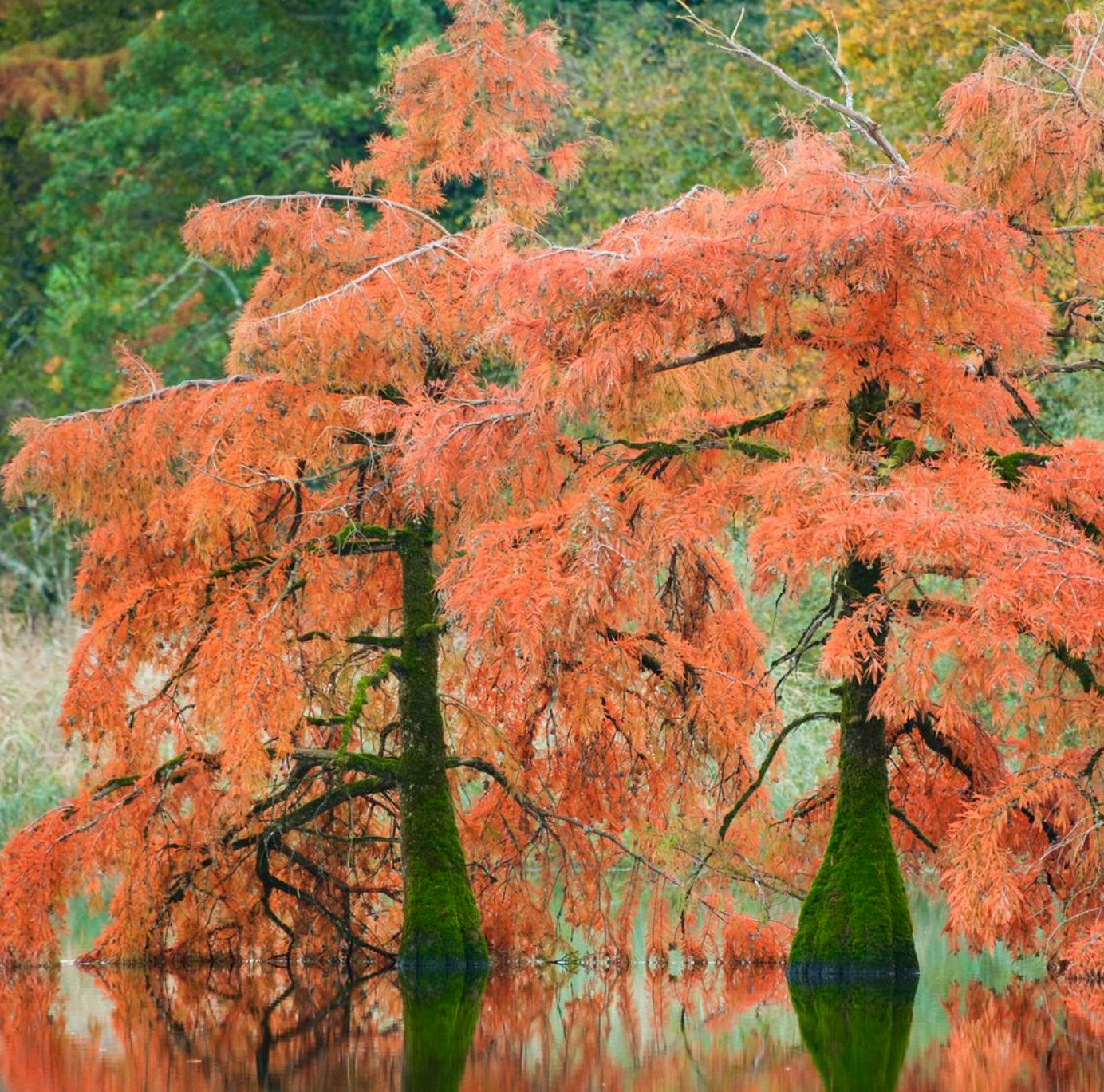Taxodium distichum
Taxodium distichum
Couldn't load pickup availability
Product Description
Taxodium distichum, commonly known as the bald cypress, is a magnificent and iconic deciduous tree native to the southeastern United States. It is renowned for its unique appearance, adaptability to wet conditions, and its ability to thrive in a variety of landscapes. Here's a brief description and some cultivation tips for Taxodium distichum:
The bald cypress is a large, long-lived tree that can reach heights of up to 100 feet (30 meters) or more. Its distinctive features include soft, feathery, bright green needles that turn rusty-orange or brown in the fall before shedding, giving it the "bald" appearance. This tree is well-known for its "knees," which are conical structures that protrude from the water or wet soil around its base. These knees are believed to help with aeration and stability in flooded conditions. In addition to its aesthetic appeal, the bald cypress is valued for its timber and is often used in landscaping and reforestation projects.
Cultivation:
-
Location: Plant bald cypresses in full sun for optimal growth and development. They can tolerate some shade but thrive in sunny locations.
-
Soil: Bald cypresses are highly adaptable and can grow in a variety of soil types, including clay, loam, and sandy soils. They are particularly well-suited to wet or waterlogged soils, making them ideal for wetland and riparian areas.
-
Watering: These trees are highly drought-tolerant once established, but during the first few years of growth, they benefit from regular watering to establish a strong root system. In consistently wet or waterlogged soils, supplementary watering may not be necessary.
-
Pruning: Minimal pruning is typically required. Remove any dead or damaged branches as needed, preferably during the dormant season in late winter or early spring.
-
Fertilization: Bald cypresses usually do not require heavy fertilization. If necessary, use a balanced, slow-release fertilizer in the spring to promote healthy growth.
-
Mulching: Apply a layer of mulch around the base of young trees to retain moisture, regulate soil temperature, and suppress weed growth. Keep the mulch away from the trunk to prevent moisture-related issues.
-
Pest and Disease Control: Bald cypresses are relatively resistant to pests and diseases. Regularly inspect your tree for any signs of stress or issues and address them promptly.
-
Propagation: You can propagate bald cypresses from seeds, cuttings, or by transplanting young trees. Seeds should be collected in the fall and sown in a well-draining medium.
-
Flooding Tolerance: One of the remarkable features of bald cypresses is their ability to thrive in flooded or waterlogged conditions. These trees are well-suited for planting along water bodies and in wetland areas.
Taxodium distichum is a magnificent tree that adds beauty and character to landscapes while also contributing to the ecological health of wetland environments. With proper care, it can become a stunning focal point in your garden or a valuable addition to restoration projects in wetland areas.
IMPORTANT: Please be aware that picture 1 show adult plant not for sale, the offer is for a plant in the dimension indicated in title description.
Please be aware that most plants change across seasons. For example, some of them will naturally lose leaves or change in colour during colder months. Do not hesitate to contact us for further informations about the plants of your interest.
Cultivation
Cultivation
Info and Disclaimers
Info and Disclaimers
Plant height:
Pot diameter:
Picture taken on:


